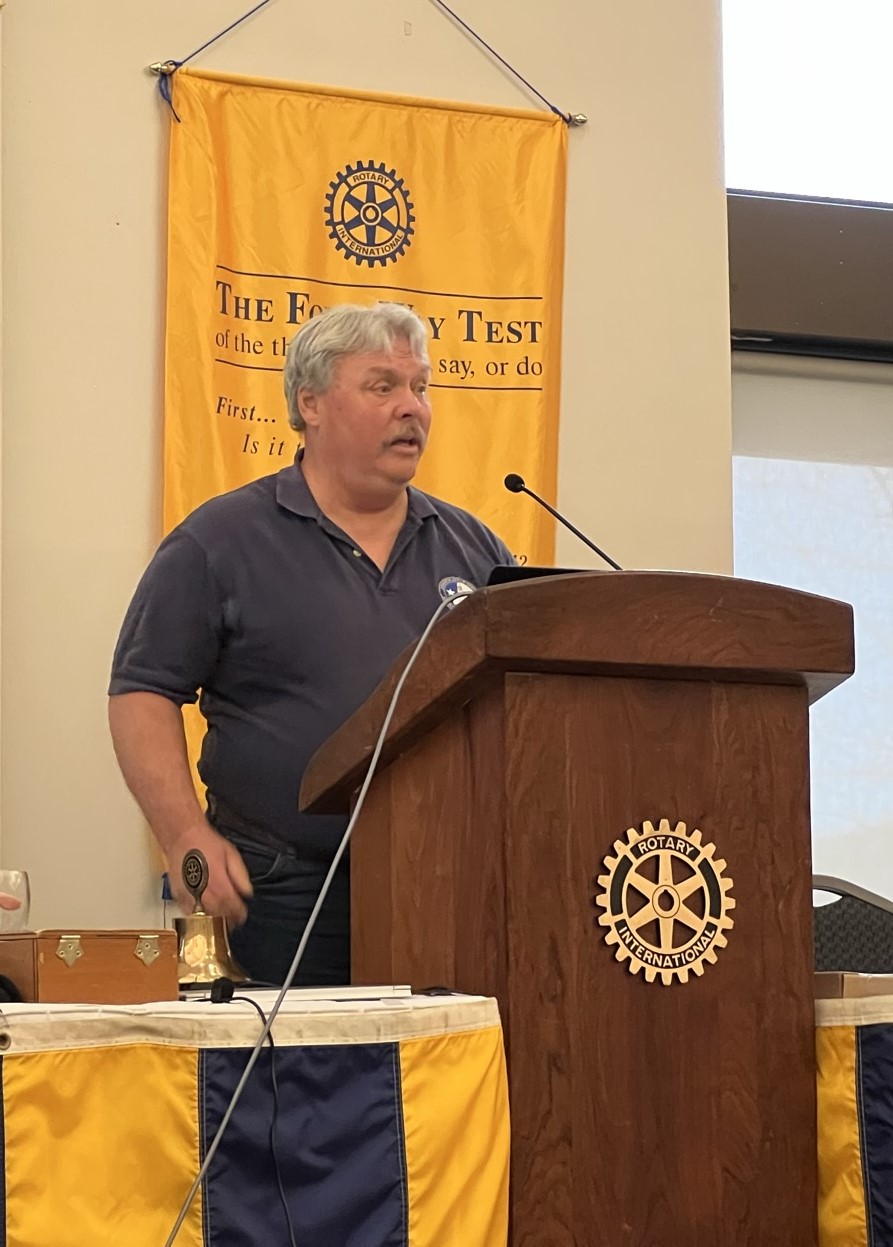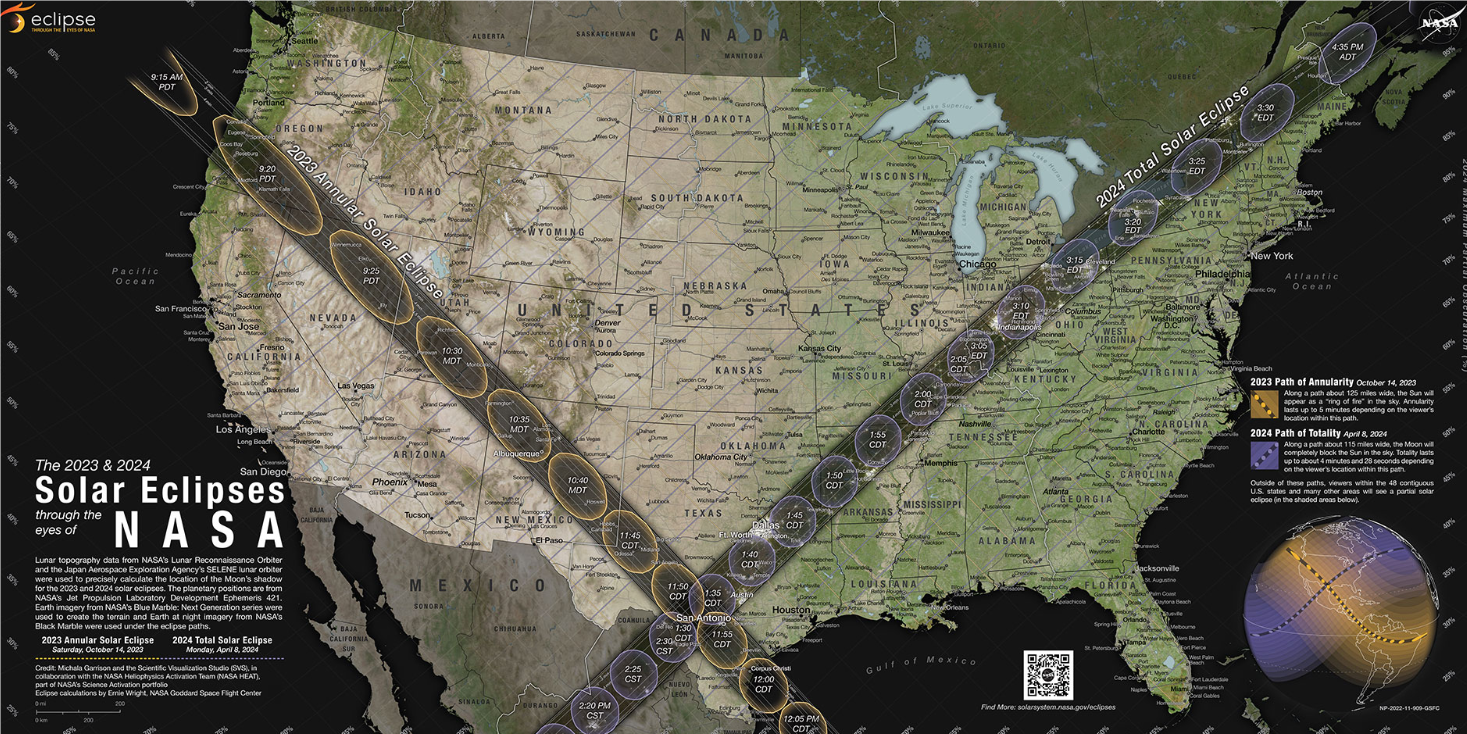
Jeff Stone provided the program on the upcoming Solar Eclipses. Jeff formerly worked for NASA and helped train crews on the shuttle flights. He has seen a number of eclipses, and the first one was in Mexico in 1991. As he explains, it was a phenomenal event that hooked him for life. He has even built his own telescopes for night sky viewing.
Jeff tells us that the best place to observe an eclipse is on top of a hill, where you can see the shadow coming on the horizon. During the four and one half minutes of the total eclipse, you will be able to see the sun's corona while the moon blocks the actual outline of the sun. It is always there but not visible to us because of the brightness of the sun.
There are some interesting things to notice leading up to and during the total eclipse. Planets and stars will become more visible shortly before totality. The approaching shadow is a surreal experience as it leads up to darkness. You may notice a perceptible drop in temperature, and the wind may pick up, die down or change. Shadows will become much sharper, and the color of the sky will change. Wildlife and birds may act differently, thinking night is approaching.
The annular eclipse will be on October 14, 2023 and the total eclipse will be April 8, 2024. Kerrville is fortunate in that we will be right at the epicenter for both events. You don't want to miss this because the next one in the U.S. isn't until 2044.

Jeff also spoke about the importance of keeping the night sky as dark as possible. Plants, birds and wildlife have adjusted to the daily cycle of day and night, and excessive lighting disrupts their life-sustaining behaviors such as reproduction, nourishment, sleep and protection from predators. Kerrville has recently passed a dark sky ordinance, so when installing new light fixtures or when replacing existing ones, be sure to buy dark sky friendly fixtures. They are no more expensive than regular lights, and will help keep our skies as dark as possible. In general, avoid upward directed light, and use warmer temperature lighting (3,000 degrees K or less).




